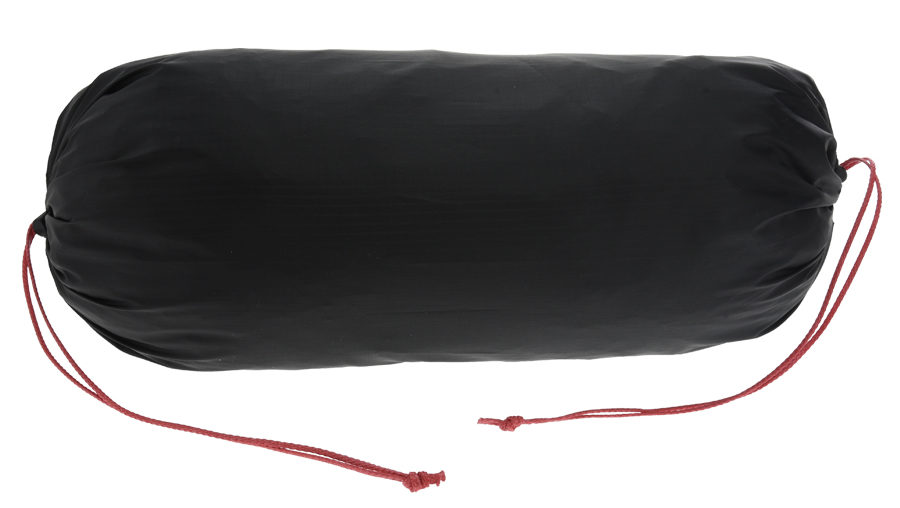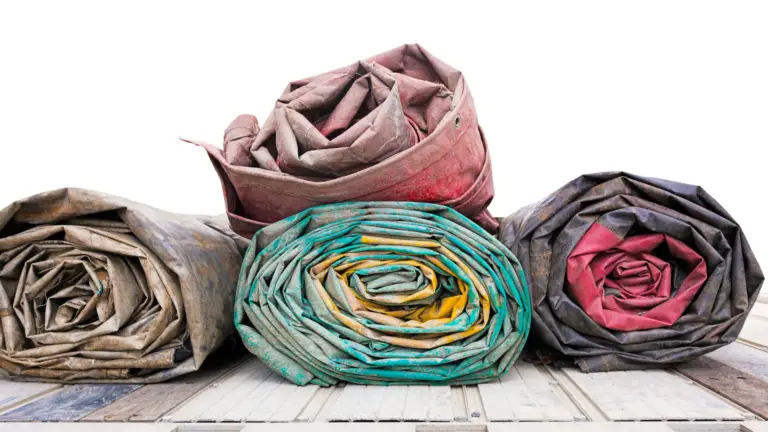Disclosure: This page may contain affiliate links. If you purchase a product from one of our links, we could receive a commission from the seller, however, these do not influence our editorial choices. We aim to recommend products we believe in and to not mislead our audience. Learn More »
Tarps are a garage staple for many households, as they are the easiest way to cover items outside and protect them from the elements. But after you’ve finally taken care of whatever was underneath it for half the fall, how do you properly stash that tarp away until you need it again?
Contents
Storing tarps
When storing tarps you want to make sure that it’s completely dry and away from direct sunlight. Dampness and UV rays will absolutely damage and destroy your tarp–especially when in long-term storage. You can fold it up flat or roll it up to safely store it away from the sun and the elements.
Depending on the size and material of your tarp you can fold it any number of ways, roll it up, or a combination of the two. If you have guy wires with your tarp you can use those to bind it in a roll. If not, use bungee cords or any other rope.
If you’ve folded it flat and it keeps opening on its own (especially with a heavy-duty tarp) you can use tape to keep it from expanding.
Cleaning a tarp

After using a tarp outside it may be in need of a bit of cleaning before storing. First, lay the tarp flat and remove any dirt or other residue by brushing or sweeping the tarp if possible.
Once the large debris is gone, you can clean the tarp with mild soap and water or a multi-surface cleaner specialized for poly plastics or canvas while not harming any flame-retardant or UV-blocking coatings on the tarp.
Be sure not to scrub too hard while cleaning your tarp, as well, as those coatings could also be damaged by aggressive scrubbing.
Once you’ve cleaned one side, repeat on the other side and then rinse the soap or cleaner completely from both sides to hang dry.
Drying a tarp
The first rule of tarp club is to never put away a wet tarp. Not only does this breed mildew and mold but it also can rot your tarp after a long enough period. Whether you actively clean your tarp or not, drying off your tarps is the best way to keep your tarp in the best shape.
After you’ve cleaned your tarp, hang the tarp to allow it to dry completely. This will most likely be easiest by hanging it like a tent over a rope in a garage or shop.
Once the tarp is completely dry you can then proceed to store your tarps.
Repairing a tarp
While preparing your tarp for storage you may notice that there are holes or rips in your tarp. Thankfully, repairing tarps is fairly simple given that you have the right repair materials.
The most effective way to rejoin a tear would be with tarp glue. Tarp glue is extremely resilient against the elements, grease, chemicals, oils, heat, and is waterproof to ensure that your tarp doesn’t leak. Be sure to follow the manufacturer’s directions when using tarp glue.
Another method would be with tarp repair tape. You can get tarp repair tape for poly, vinyl, and even canvas tarps and are a very easy and durable way of repairing tears, patching holes, and even connecting two tarps together as one.
Should you fold or roll a tarp for storage?

In general, there’s not much of a difference between folding or rolling a tarp as you store it, but depending on how long you plan to store or even use the tarp may guide you one way or another.
Folding a tarp is perfectly fine for storage–when you buy a new tarp it’s folded on the shelf for who knows how long, right? The issue with folding comes when you frequently unfold and refold along the same fold lines.
If you’re a creature of habit and always put it back folded the same way then you’re creating repeated stress along the same lines. This can cause structural weakness and eventual tears along those fold lines.
Tight folds could also become brittle when left in long-term storage and/or in direct sunlight. Using looser folds when you store tarps will help them last longer.
Rolling a tarp is a good option for storing tarps and may fit in your space better. Usually a rolled tarp still technically has a fold, but it’s not as many folds and the roll isn’t as distressing on the tarp.
In reality, you probably won’t go wrong no matter whether it’s folded or rolled as long as it’s out of the sunlight and it’s stored dry.
Folding a heavy-duty tarp
You may run into problems when trying to fold thicker tarps in a normal half-half-half-again sort of fold.
It may be easier to fold the outer edges of the tarp in toward the center until you get to the width and length you desire for storage. This method will help keep the folds more even and less likely to need forcing into a flat fold.
How to store a hammock tarp

Up until now, we’ve been discussing the traditional poly tarp (along with vinyl and canvas tarps), but some people have hammock tarps and need to store these as well. A hammock tarp is, well, a tarp that covers a hammock. It’s a more specialized outdoor or camping tarp, but the storage is similar.
Just like with a regular tarp you’ll want to clean, dry, and then put away your hammock tarp in a dry place outside of direct sunlight. But because of the nature of a hammock tarp and its use case, there are a few extra ways to store one.
Storing a hammock tarp in a snakeskin

A popular way of storing a hammock tarp is in what’s called a snakeskin. It’s a fabric tube that contains a rolled-up tarp and still allows it to be tied to trees or other anchors as it’s open on the ends.
The tarp in the snakeskin is tied to the trees above your hammock. When it starts to rain (or the sun gets too hot) you slide the tube off of the tarp to one end, like a snake shedding its skin. This lets you then unfurl the rolled tarp underneath to keep yourself dry.
Once the rain is gone, roll your tarp back up and slip the snakeskin back over the tarp to keep the view from your hammock mostly unobstructed.
Some people not only take their tarps camping in the snakeskin but also pack them in their gear storage in the snakeskin as well. Your own available storage space will often dictate whether you store in the snakeskin or in a stuff sack.
Storing a hammock tarp in a stuff sack

A stuff sack is another popular way of storing hammock tarps. These are more normal-sized bags, similar to what a sleeping bag comes rolled up in. Basically, it’s a sack into which you stuff something.
Despite the common worry of damaging your hammock tarp by stuffing it into a sack and wrinkling the tarp, you can actually rest easy on this. Because the tarp never goes back into the stuff sack the same way twice, there is very little damage caused by repeated fold lines and it’s absolutely a safe way of storing your hammock tarps.
How do you store a silnylon tarp?
Storing silnylon tarps is no different from any other tarps, whether they be poly, nylon, or canvas. You can store silnylon in snakeskins, stuff sacks, or any other normal storage. It’s perfectly safe to keep silnylon tarps compressed for extended periods of time.

